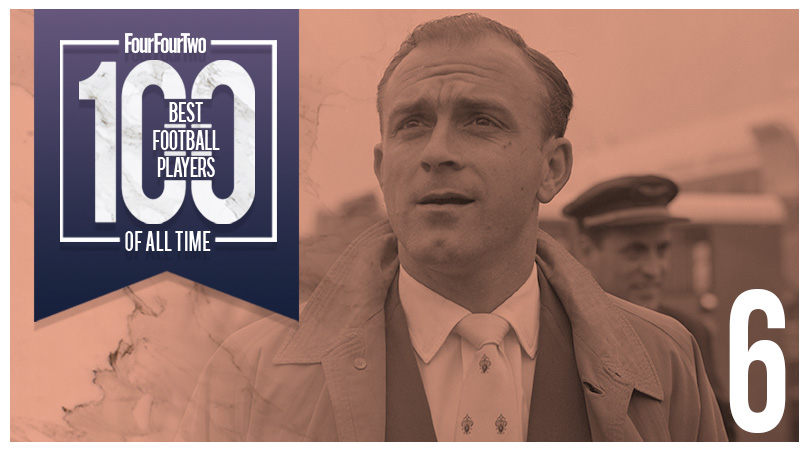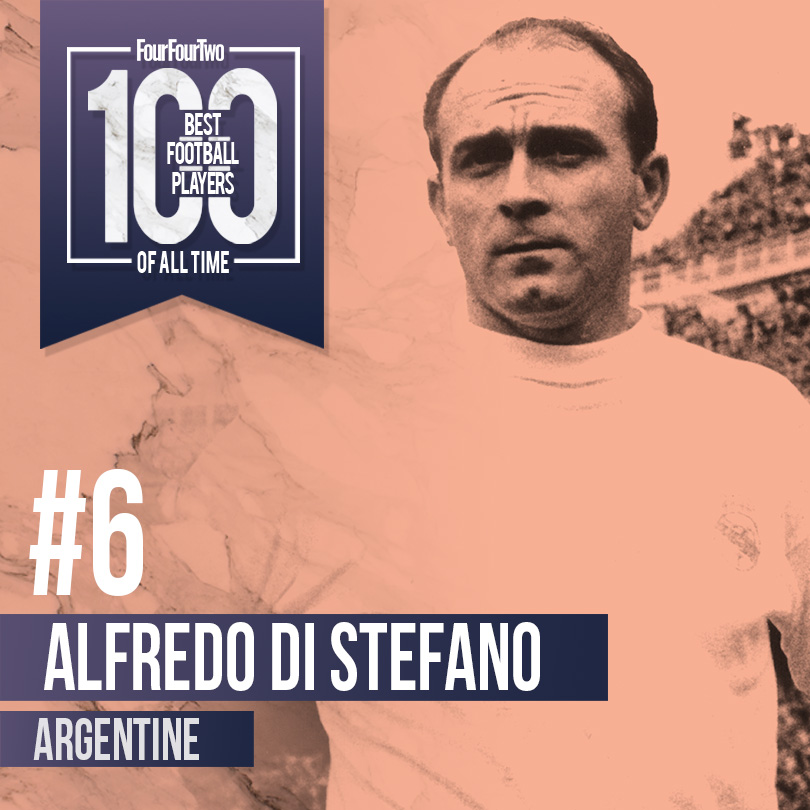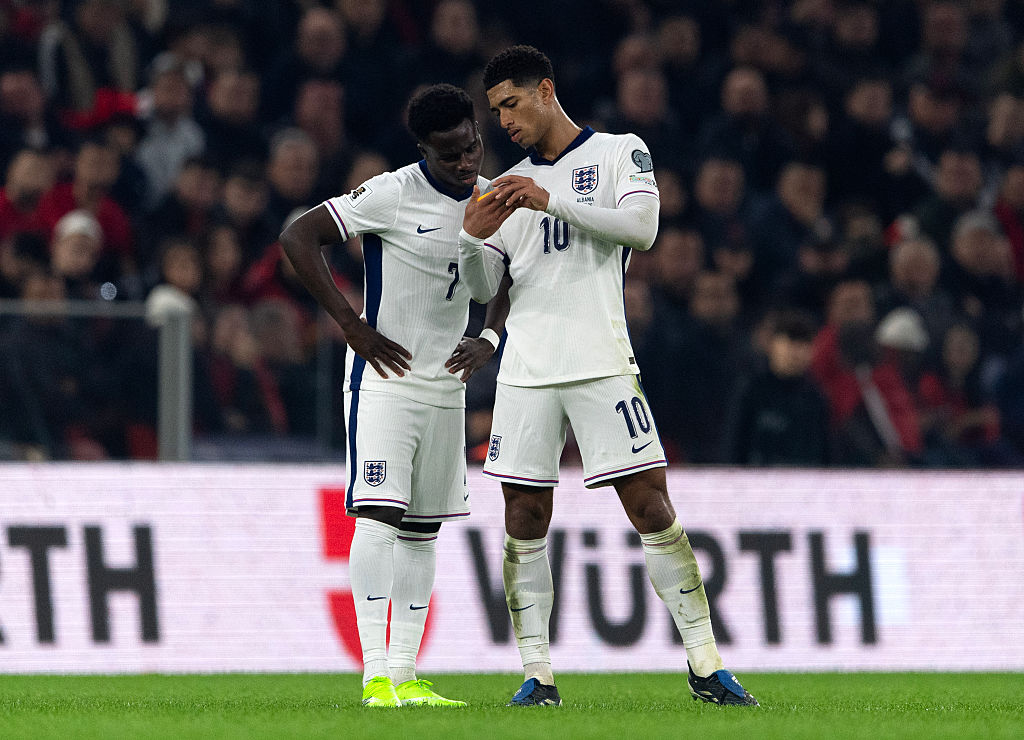FourFourTwo's 100 Greatest Footballers EVER: No.6, Alfredo Di Stefano
Held in wonder by Charlton, Beckenbauer and Puskas, the Blond Arrow rampaged his way around South America and Spain to make history with Real Madrid

Over a glittering 20-year spell, Di Stefano was the star of three successful teams in three countries.
He’d grown up playing football on the streets of Barracas, a working-class suburb of Buenos Aires, and started out at River Plate. After four years in his home nation he moved to Millonarios from Bogota, Colombia, before winning fame, fortune, and copious amounts of silverware with Real Madrid in the late 1950s and early ‘60s.
Who is this man? You can see his influence on everything that’s happening
Not only was he a superb and versatile centre-forward whose relentless stamina meant he grabbed a huge number of goals late in matches, but like the very best players he could influence play everywhere on the pitch.
“Who is this man? Wherever he is on the field he is in a position to take the ball. You can see his influence on everything that’s happening,” wrote Bobby Charlton after seeing Di Stefano play for Real Madrid in 1957.
Hitman for hire
The Blond Arrow may not have boasted the natural gifts of players like George Best or Diego Maradona, but Charlton and Franz Beckenbauer, among others, have both stated that Di Stefano was probably the best all-round player to grace football.
After his net-busting exploits helped guide River Plate to the title in 1947, Di Stefano joined Millonarios in the breakaway Colombian league. Since it was outside of FIFA’s remit, Millonarios paid huge wages to their best players – and Di Stefano duly won three league titles in four years in Bogota.
The best features, fun and footballing quizzes, straight to your inbox every week.
Charlton and Beckenbauer, among others, have both stated that Di Stefano was probably the best all-round player to grace football
But when Colombia rejoined FIFA in 1953, the lethal frontman headed to Spain.
Real Madrid fought tooth and nail with bitter rivals Barcelona for his signature. In the midst of an acrimonious battle between the giants, the Spanish Football Federation suggested both clubs share the player, but controversially awarded Madrid the first bite at him.
Barcelona officials claimed that Francoist influence was the root cause of the federation’s decision, but were later persuaded to sell their rights to the player anyway.
The Catalan club’s loss was Real Madrid’s almighty gain: four days later, he netted a hat-trick against Barcelona and, with 27 goals, led los Blancos to the Spanish title for the first time in 21 years.

Pied piper
Throughout the next 11 campaigns, Di Stefano won eight Spanish titles, plundered 218 goals in 282 matches and won five consecutive European Cups. Naturally, he scored in all five finals.
Even the great Ferenc Puskas had to dance to Di Stefano’s tune
He was often reluctant to share centre stage with some team-mates, including the great Brazilian Didi, who claimed that the Blond Arrow refused to pass to him. Even the great Ferenc Puskas had to dance to Di Stefano’s tune.
On the final day of the league season in 1958/59, with both players level on goals scored, Puskas passed to his team-mate rather than score himself. Nonetheless, the Hungarian said of him: “Di Stefano is the best there has been, or is ever likely to be.”
Career highlight
Di Stefano netted a breathtaking hat-trick in Real Madrid’s astonishing 7-3 annihilation of Eintracht Frankfurt at Hampden Park in the 1960 European Cup Final.
- ICON SERIES Alfredo Di Stefano
The list
100 to 91 • 90 to 81 • 80 to 71 • 70 to 61 • 60 to 51 • 50 to 41 • 40 to 31 • 30 to 21
20 • 19 • 18 • 17 • 16 • 15 • 14 • 13 • 12 • 11 • 10 • 9 • 8 • 7 • 6 • 5 • 4 • 3 • 2 • 1
Jon Spurling is a history and politics teacher in his day job, but has written articles and interviewed footballers for numerous publications at home and abroad over the last 25 years. He is a long-time contributor to FourFourTwo and has authored seven books, including the best-selling Highbury: The Story of Arsenal in N5, and Get It On: How The '70s Rocked Football was published in March 2022.

